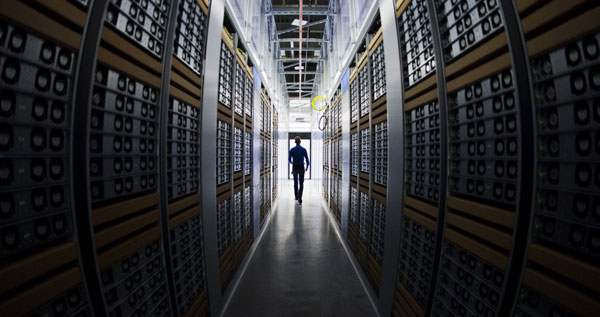
Almost overnight, our technology revolution is shaking up entire industries and remaking society. Don’t get caught up in the small stuff, though: Tech really is changing how we think about our ideas.
We’ve used ideas to sculpt the globe since the Industrial Revolution, thanks largely to the way we handle intellectual property. When machines, and machines to make identical machines, mass-produced reliably identical goods, it was because people understood the same set of instructions.
Mass-produced books, music and movies were possible, too. Like machine-making instructions, these items were made reliable and protected with laws of copyright, patent and trademark.
Now, according to people involved in the business of protecting ideas, all of that is set to change.
Software, lashing together thousands of computer servers into fast and flexible cloud-computing systems, is the reason. Clouds, wirelessly connected to more software in just about everything, make it possible to shift, remix and borrow from once separate industrial categories.
“Products are taking on a lot more functionality, like cars that have touch screens, streaming video, and Wi-Fi antennas,” said Russell E. Levine, a Chicago-based partner at the law firm Kirkland & Ellis who specializes in patent infringement and licensing. “Carmakers are used to thinking about the I.P. around brakes and exhaust systems. Now they need to think about who owns what technology in all kinds of products.”
Mr. Levine works with a lot of smartphone companies. In that business, it’s not just that an app-rich, cloud-connected phone may be at one moment a chessboard, then an Internet browser. Smartphones are an example of connected products that are intended to sell by the hundred million, standardized across a hundred countries. The cross-licensing of ideas across that many borders is almost as complicated as the global cloud itself.
“These are things we never thought about, as industries get connected to each other,” said Pamela Demain, president of the Licensing Executives Society, an intellectual property trade group. “There is a huge amount of complexity in software-driven converged devices, with I.P. at the center of the development. You add in wireless and globalization, that just adds more complexity.”
So far, this sounds like full employment for the lawyers, and an intensification of business as usual. Looking at the long-term direction of tech, however, it could spell the opposite.
There are over one million servers in each of the big clouds of Google, Microsoft, and Amazon, executives at those companies say. For new entrants, one limit is that capital spending costs more than $1 billion a year. Another is engineering know-how; how the future works will be in just a couple of thousand heads, at most.
Everything, be it software and networking or power, is different when so many computers are spread across the globe. The pace of innovation is so quick, and the number of players so small, that in some cases, the players elect not to patent inventions, wary of what they’d disclose about themselves in the application.
A number of other big players are still trying to come at the proprietary hold of these giants, and to do it, they’re using open-source software, a license-free method of creating a product, fast, by distributing the work as widely as possible.
“Open source isn’t just a way to give back to the community. It’s a way to blow up the other guy,” said Bill Hilf, who oversees Hewlett-Packard’s work on OpenStack, a kind of open-source, cloud-computing software.
Hoping to build a product better than Amazon’s cloud, HP has over 400 paid engineers working full time to help a community of thousands create this free software. It has also donated enormous amounts of valuable software, like networking and automation tools. It even indemnifies its OpenStack customers against patent lawsuits.
“That gives our lawyers ulcers,” Mr. Hilf said. “They have to protect a product that is being changed all the time by people who don’t work for HP.”
Still, the corporate donations to cloud-based open source seem unstoppable. Mr. Hilf noted that Linux, an open-source operating system “took 15.8 years to get 180 companies contributing. OpenStack took 1.6 years to get 160 companies. It’s insane.”
Last month, Facebook, Google, Walmart’s online operation and others announced a consortium with a goal of enabling new versions of software to be released multiple times a day. They used to come out every few years.
Hoping to move even faster against his competitors, Mark Zuckerberg, Facebook’s chief executive, three years ago took the unusual strategy of open-sourcing not software, but computer hardware. In June, this produced a networking switch, or a gear that helps direct data traffic over large computer networks.
Hardware and software of all kinds may further change with 3-D printing. Designs there can be widely shared and modified in a computer, to an extent that originals are hard to recognize, let alone protect.
In a provocative article published in March, Mark Lemley, a professor at Stanford Law, projected a similar copy-paste-change fate for the information of synthetic biology.
“How will our economy function in a world where most of the things we produce are cheap or free?” he asked. “It is hard even to begin to think about the transition.”
nytimes

